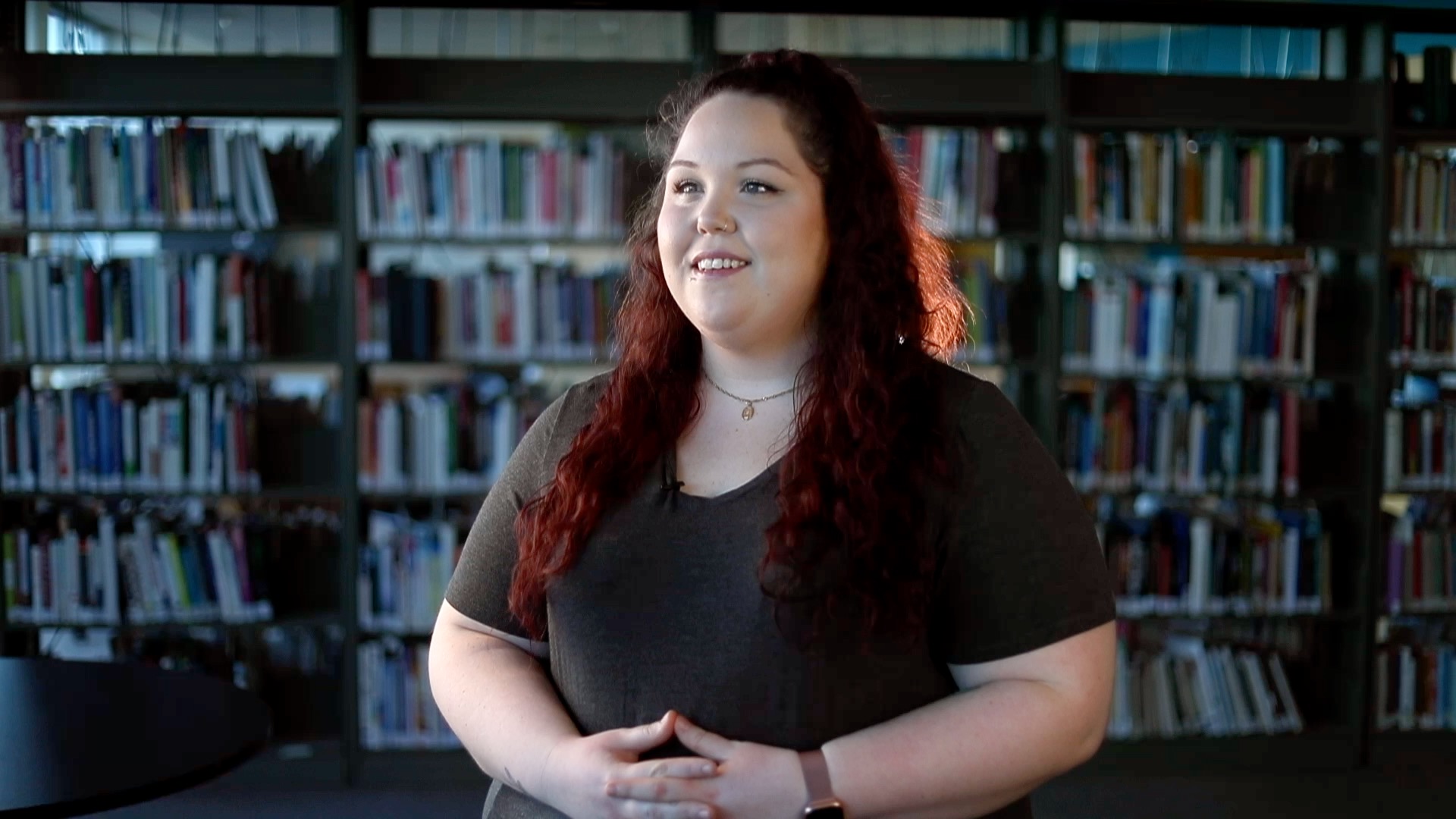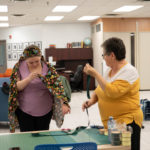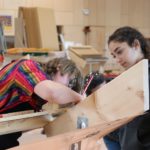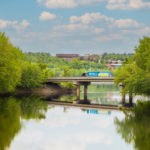Brooke Anderson has faced tough challenges during her Graphic Design and Communication program at NBCC. Her father got sick, and she needed to care for him; then, in late 2022, she was hospitalized with COVID.
Despite it all, Brooke is on track to graduate this spring—and she credits connected classrooms at NBCC.
“The HyFlex program allowed me to worry less about how I was going to get my education,” she said. “It also allowed me to keep up during the time I was in and out of the hospital. In the situation I was in, most would have had to drop out, or delay the course. But this system, and the instructors in my program, allowed me to keep up with my recovery appointments, and still pass the course while getting the education I needed and wanted.”
She says the technology helped her feel like she was “in the classroom without actually being in the classroom.” This kind of connection is just one of the ways NBCC is removing barriers like childcare, illness, travel, or weather, allowing students to continue learning when life gets in the way.
And the Going Beyond campaign is helping make that happen. With innovation a key pillar of the $16 million campaign, NBCC is creating modern, connected classrooms, with new technology and collaborative spaces to meet students where they are.
“What we’re trying to do is allow that flexibility for students,” said Ann Drennan, NBCC’s Vice President, Academic, Innovation, and Student Affairs. “They don’t have to be in the classroom—they can be connected to the learning no matter where they are. We’re going to suit their needs.”
NBCC’s connected spaces easily pivot from in-class to remote learning by streaming through Surface Hubs (large wall-mounted ‘tablets’ with a camera and microphone) and OWLs (360-degree video conferencing devices). They create easy interactivity for on-campus study groups. And upgraded tech also supports accessibility within the classroom — students with vision problems, for example, can view projected slides on their own laptops.
Dave Kell, NBCC’s Head of Teaching and Learning Innovation, said connected spaces enable instructors to reach students in ways they’ve never been able to before.
“To the modern student, it’s leveraging more of their realities and also their expectations for when they graduate,” Kell said. “A large number of them are going to be going into careers that require very high digital literacy, digital connection skills.”
New technology calls for the right kind of connected spaces, such as private group workrooms with a whiteboard, or classrooms with custom-designed to maximize OWL technology. NBCC’s campus buildings, built decades before today’s technology was even dreamed of, need to be fit for purpose, but they also need to be warm and welcoming spaces. That means facility upgrades, which the Going Beyond campaign will also support.
What else can NBCC do with more connectivity? With NBCC faculty teaching cohorts spread across six campuses, technology and connected spaces are helping to bring communities together, Drennan said, making the classroom a ‘hub’ of learning. Connected spaces make the province smaller for learners, and create opportunities for instructors, such as hosting remotely from anywhere in the world, inter-disciplinary collaboration between programs, or new ways to use innovation is hands-on learning. The possibilities are endless.
For Brooke , it’s enough that a connected classroom offered a way to seamlessly keep up with her program and her goals.
“My hope after graduation is to pursue my dream,” she said. “I know now I can work from anywhere, through anything, which has opened doors to many opportunities for my future.”
Find out how NBCC is creating modern connected spaces with the Going Beyond campaign here.





